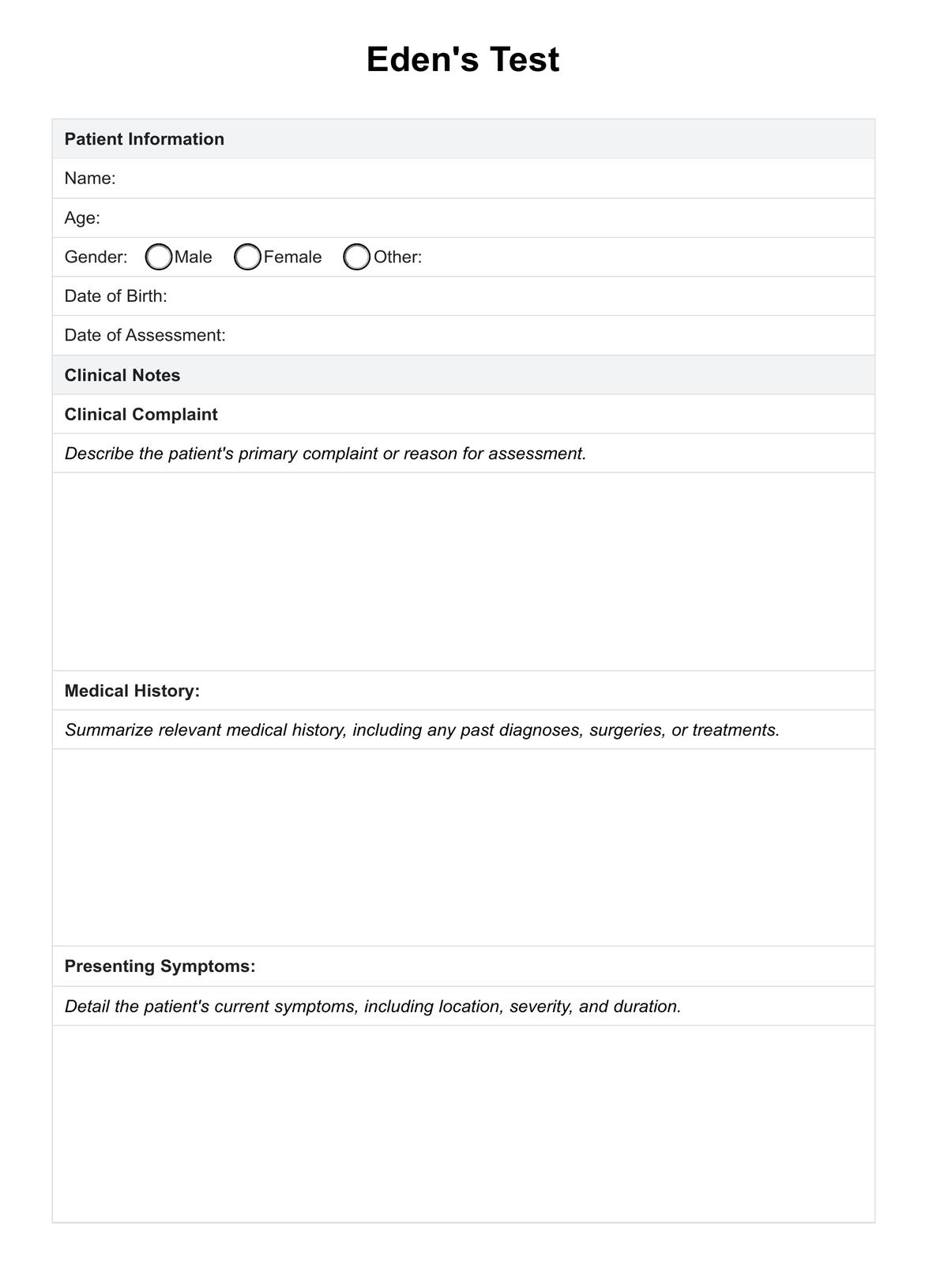To perform the Eden's Test, the patient is instructed to retract their shoulders and bring their shoulder blades together, mimicking the military position. The h

Eden's Test
Discover the significance of Eden's Test in diagnosing thoracic outlet syndrome. Learn how this maneuver aids in identifying neurovascular compression.
Use Template
Eden's Test Template
Commonly asked questions
The Eden's Test is indicated in patients presenting with symptoms suggestive of thoracic outlet syndrome, such as pain, numbness, tingling, or weakness in the neck, shoulder, arm, or hand.
A positive Eden's Test result is characterized by exacerbation or reproduction of symptoms, indicating compression of neurovascular structures within the thoracic outlet, such as the brachial plexus or subclavian artery.
EHR and practice management software
Get started for free
*No credit card required
Free
$0/usd
Unlimited clients
Telehealth
1GB of storage
Client portal text
Automated billing and online payments











